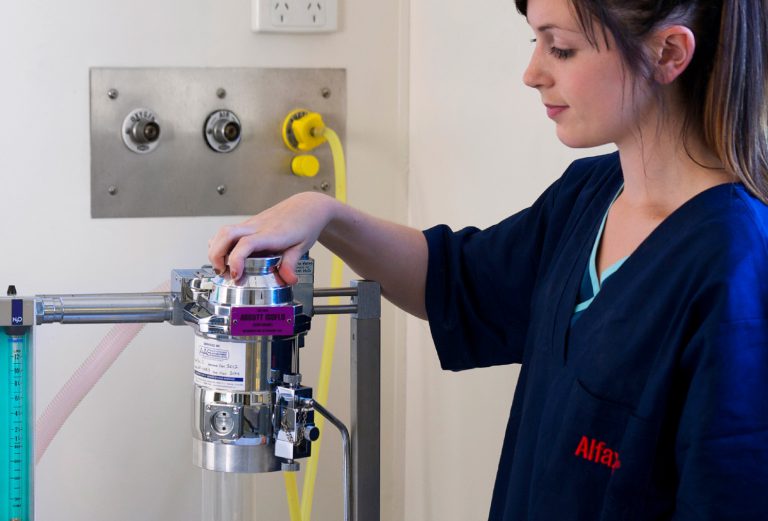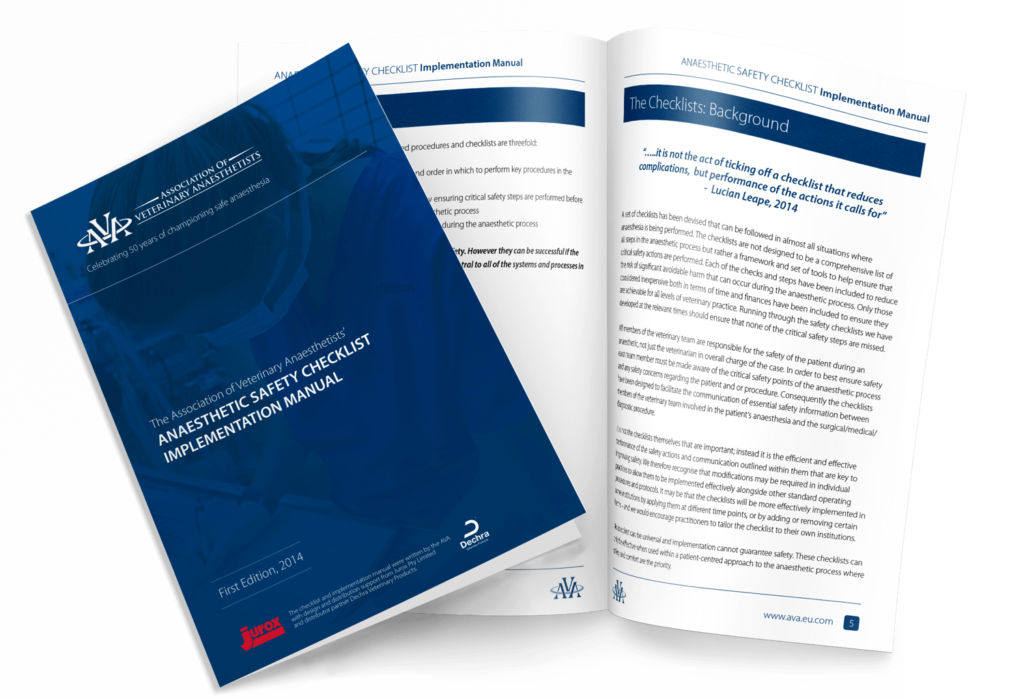Menu
Anaesthesia Assessment
Practices should have a system of checks that are performed prior to every patient being anaesthetised.
‘…it is not the act of ticking off a checklist that reduces complications, but performance of the actions it calls for’ – Lucian Leape, 2014

Patient Checks
- History
- Physical Examination
- ASA Classification (prior to premedication)
- Pain Assessment
- Other Suggested Diagnostic Procedures – (blood tests, cardiac investigation etc)
- Concurrent Disease and Medication Assessment
- Premedication Selection
- Effect of Premedications (prior to induction)

Equipment Checks
- Oxygen and Inhalation Agent Levels
- Gas Line Connections and Valve Function
- Emergency Oxygen Button Function
- Patient Breathing System Selection (including a range of endotracheal tubes)
- Soda-lime and Scavenger System
- Patient Monitoring and Warming Devices
- Required Drugs, calculated, prepared and labelled
- Emergency Drugs

Patient Risk Assessment
It is advisable to allocate a risk assessment for each patient being anaesthetised. The American Society of Anesthesiologists (ASA) has determined a classification for the clinical status of human patients when assessed pre-operatively 36. This is readily adoptable by veterinary practices and can be used to help tailor anaesthetic protocols to individual patients and can be accessed at this link.
The Association of Veterinary Anaesthetists have developed an Anaesthetic Safety Implementation Manual which is available for you to download.
We use cookies on our website to give you the most relevant experience by remembering your preferences and repeat visits. By clicking “Accept”, you consent to the use of ALL the cookies.
Manage consent
Privacy Overview
This website uses cookies to improve your experience while you navigate through the website. Out of these, the cookies that are categorized as necessary are stored on your browser as they are essential for the working of basic functionalities of the website. We also use third-party cookies that help us analyze and understand how you use this website. These cookies will be stored in your browser only with your consent. You also have the option to opt-out of these cookies. But opting out of some of these cookies may affect your browsing experience.
Necessary cookies are absolutely essential for the website to function properly. This category only includes cookies that ensures basic functionalities and security features of the website. These cookies do not store any personal information.
Any cookies that may not be particularly necessary for the website to function and is used specifically to collect user personal data via analytics, ads, other embedded contents are termed as non-necessary cookies. It is mandatory to procure user consent prior to running these cookies on your website.

